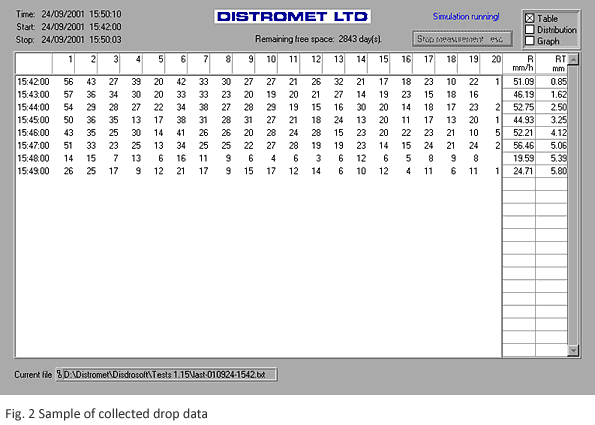General
 The disdrometer for rain drops is an instrument for measuring rain drop size distributions continuously and automatically. It was developed because statistically meaningful samples of rain drops could not be measured previously without a prohibitive amount of work.
The disdrometer for rain drops is an instrument for measuring rain drop size distributions continuously and automatically. It was developed because statistically meaningful samples of rain drops could not be measured previously without a prohibitive amount of work.
The instrument transforms the vertical momentum of an impacting drop into an electric pulse whose amplitude is a function of the drop diameter. A conventional pulse height analysis yields the size distribution of rain drops.
An example of a system is shown in Fig. 1. It consists of a disdrometer RD-80 and a personal computer or a notebook.

The sensor is exposed to the rain drops to be measured. Together with the processor it produces an electric pulse for every drop hitting its sensitive surface. The amplitude of the pulse is in a fixed relation to the diameter of the rain drop. In the processor RD-80 pulses are divided into 127 classes of drop diameter, and for every drop hitting the sensor a seven bit ASCII code is transmitted to the serial interface of the PC.
A computer program, which is delivered with the disdrometer system, can be used to put the data in a suitable format for recording on a file. In order to get statistically meaningful samples and to reduce the amount of data, the program reduces the number of classes to 20.
Fig. 2 shows a typical display generated by the data acquisition program. Quantities derived from the drop size data, like rainfall rate, liquid water content and radar reflectivity factor and the drop size distribution are calculated and displayed during the measurement.
|
|
